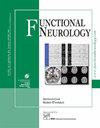Magnetic resonance imaging and positron emission tomography in the diagnosis of neurodegenerative dementias.
Q2 Medicine
引用次数: 25
Abstract
Neuroimaging, both with magnetic resonance imaging (MRI) and positron emission tomography (PET), has gained a pivotal role in the diagnosis of primary neurodegenerative diseases. These two techniques are used as biomarkers of both pathology and progression of Alzheimer's disease (AD) and to differentiate AD from other neurodegenerative diseases. MRI is able to identify structural changes including patterns of atrophy characterizing neurodegenerative diseases, and to distinguish these from other causes of cognitive impairment, e.g. infarcts, space-occupying lesions and hydrocephalus. PET is widely used to identify regional patterns of glucose utilization, since distinct patterns of distribution of cerebral glucose metabolism are related to different subtypes of neurodegenerative dementia. The use of PET in mild cognitive impairment, though controversial, is deemed helpful for predicting conversion to dementia and the dementia clinical subtype. Recently, new radiopharmaceuticals for the in vivo imaging of amyloid burden have been licensed and more tracers are being developed for the assessment of tauopathies and inflammatory processes, which may underlie the onset of the amyloid cascade. At present, the cerebral amyloid burden, imaged with PET, may help to exclude the presence of AD as well as forecast its possible onset. Finally PET imaging may be particularly useful in ongoing clinical trials for the development of dementia treatments. In the near future, the use of the above methods, in accordance with specific guidelines, along with the use of effective treatments will likely lead to more timely and successful treatment of neurodegenerative dementias.磁共振成像和正电子发射断层扫描在神经退行性痴呆诊断中的应用。
神经影像学,无论是磁共振成像(MRI)还是正电子发射断层扫描(PET),都在原发性神经退行性疾病的诊断中发挥了关键作用。这两种技术被用作阿尔茨海默病(AD)病理和进展的生物标志物,并用于区分AD与其他神经退行性疾病。MRI能够识别结构变化,包括神经退行性疾病特征的萎缩模式,并将其与其他认知障碍原因(如梗死、占位性病变和脑积水)区分开来。PET被广泛用于识别葡萄糖利用的区域模式,因为不同的脑糖代谢分布模式与不同亚型的神经退行性痴呆有关。PET在轻度认知障碍中的应用,尽管存在争议,但被认为有助于预测痴呆和痴呆临床亚型的转化。最近,用于淀粉样蛋白负荷体内成像的新放射性药物已经获得许可,更多的示踪剂正在开发中,用于评估tau病变和炎症过程,这可能是淀粉样蛋白级联发病的基础。目前,PET成像的大脑淀粉样蛋白负荷可能有助于排除AD的存在并预测其可能的发病。最后,PET成像可能在正在进行的痴呆症治疗发展的临床试验中特别有用。在不久的将来,按照具体的指导方针使用上述方法,加上使用有效的治疗方法,可能会更及时、更成功地治疗神经退行性痴呆。
本文章由计算机程序翻译,如有差异,请以英文原文为准。
求助全文
约1分钟内获得全文
求助全文
来源期刊

Functional neurology
医学-神经科学
CiteScore
3.90
自引率
0.00%
发文量
0
审稿时长
>12 weeks
期刊介绍:
Information not localized
 求助内容:
求助内容: 应助结果提醒方式:
应助结果提醒方式:


